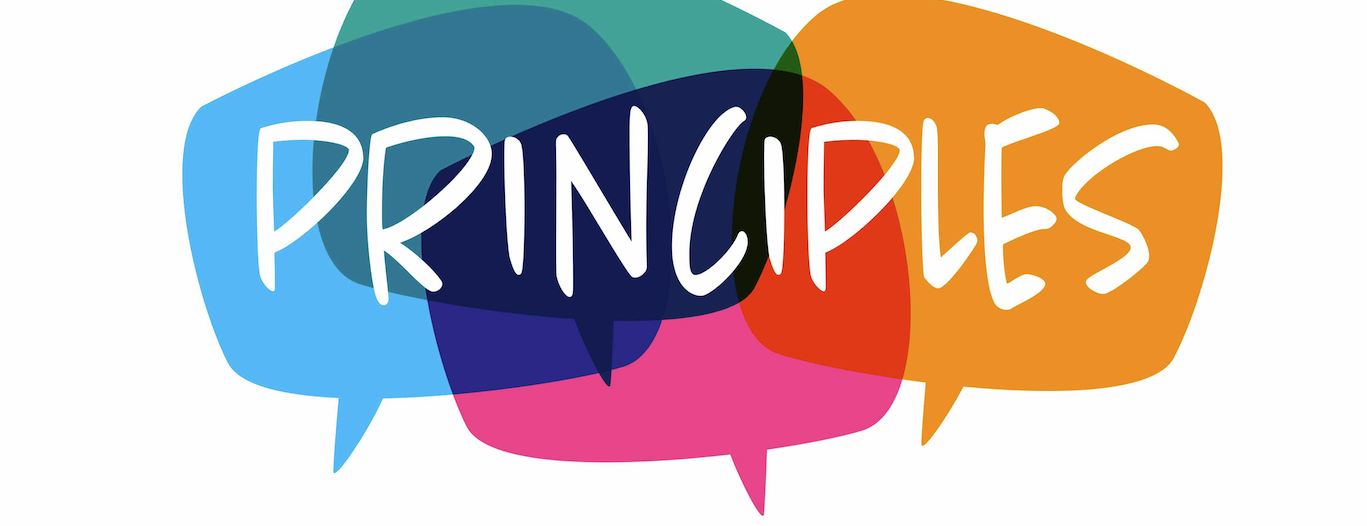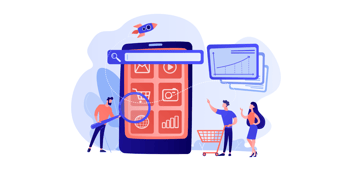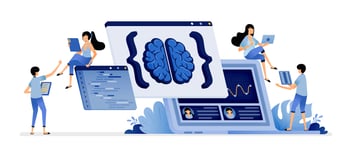Entering a cockpit for the initial time can be daunting. Overwhelmed? Probably. That’s how users often feel when navigating complex enterprise software without good enterprise UX design. Sounds daunting, doesn’t it?
We’ve all been there—struggling to find that elusive feature buried in menus or grappling with an interface that feels like solving a Rubik’s cube.
But what if I told you we could change this narrative? Make using enterprise applications as simple and intuitive as scrolling through your favorite social media feed?
In this journey together, we’ll unravel the art of crafting user-friendly designs for professional users—the unsung heroes who make businesses tick daily. We’ll delve into the nuts and bolts of designing for power users, making data visualization effective, balancing simplicity with functionality and even spicing things up with gamification techniques!
Just hang in there.
Table Of Contents:
- Understanding Enterprise UX Design
- Navigating the Process of Enterprise UX Design
- Principles Guiding Effective Enterprise UX Design
- Balancing Simplicity and Functionality in Enterprise UX Design
- Enhancing Engagement through Gamification & Emotional Reinforcement
- The Growing Importance of Mobile Experiences in Enterprise Applications
- Performance as a Key Factor in Enterprise UX Design
- FAQs about Enterprise UX Design
- Conclusion
Understanding Enterprise UX Design
The realm of enterprise UX design is unique, shaped by the specific needs and contexts of professional users. Unlike consumer-oriented products, enterprise software development must account for a complex web of user roles, responsibilities, and workflows.
In its essence, Enterprise Software Solutions focuses on enhancing productivity while minimizing frustration for end-users. It’s about creating intuitive interfaces that let people do their work efficiently and effectively.
The Role of User-Centered Design in Enterprise Applications
User-centered design plays a pivotal role in crafting these solutions. By focusing on the needs and experiences of real-world users – who we’ll call ‘enterprise users’ – designers can create applications that truly support business objectives.
This approach has been shown to improve key performance indicators (KPIs) across industries: Statistically speaking, 1 out of 8 projects show significant improvement when adopting this approach.
Consumer UX vs Enterprise UX
If you’re familiar with designing for consumers (or ‘consumer UX’), you might wonder how enterprise UX differs. Comparing consumer UX to enterprise UX is like comparing apples to oranges – two different fruits with distinct uses depending on individual needs.
Simply put, consumer apps aim to delight through simplicity and style, often seen as an entertainment medium. In contrast, enterprise applications focus more on effectiveness & efficiency needed within a professional setting because, at times, we need serious tools to do serious jobs.
Navigating the Process of Enterprise UX Design
Understanding the process of enterprise UX design is like learning a new language. It’s more than just grasping grammar rules; and you need to understand the culture and context in which it’s used. Similarly, creating an intuitive and efficient enterprise software application isn’t solely about mastering technical skills—it involves deeply understanding user expectations and behaviors.
Incorporating User Research in Enterprise User Experience Design
The first step towards effective enterprise UX design begins with rigorous user research. The goal here is to know your users and empathize with them—to feel what they feel when using your product. This stage forms a solid foundation for designing solutions that meet real-world needs.
Avoiding bad ux requires keen attention to detail during this phase because minor oversights can lead to significant issues. After all, even minor annoyances increase over time if employees constantly interact with your app throughout their workday.
User research should aim to get insights into how users interact with existing systems—what works well for them, where they encounter challenges or confusion, what kind of shortcuts or workaround methods they’ve created, etcetera. This helps designers build an accurate picture of current user journeys so that future designs can enhance positive experiences while eliminating negative ones.
The Role of Prototyping & Testing in Enterprise UX Design
After gaining key insights from comprehensive user research comes prototyping—creating mock-ups or interactive models representing proposed solutions.
Testing these prototypes then allows project managers and development teams alike see how actual users would interact with their ideas before committing substantial resources into full-blown production—a time and cost-saving measure that’s also key in achieving goals.
Designing enterprise software is like constructing a building. Just as architects don’t commence construction without first creating models and conducting feasibility studies, UX designers too should not start coding before validating their ideas with prototypes tested by real users.
With prototyping and testing, we see constant betterment. Each loop ensures that growth is not just a single event, but an ongoing journey.
Principles Guiding Effective Enterprise UX Design
Let’s cut to the chase – creating a successful enterprise application is not just about integrating complex functionalities. It’s also about how those features are presented and interacted with by users. Enter enterprise UX design. At its core, it encompasses principles like consistency, accessibility, efficiency prioritization, and effective data visualization.

In designing for enterprise users, consistency reigns supreme. Picture this: you’re driving your car (the user interface) with different controls (software functions). You wouldn’t want the brake pedal moving around whenever you start the engine. That’s why having consistent layouts across an app makes it easier to use and learn.
Moving on to accessibility – software companies need their products to be used easily by everyone in large organizations. Accessibility isn’t just good practice; it also directly impacts productivity levels.
Data Visualization in Enterprise UX Design
The significance of data visualization in enterprise applications can’t be overstated. An aptly placed chart or graph can speak volumes more than blocks of text or numbers could ever hope to convey.
Suppose there was one thing we learned from research. In that case, it is that critical insights drawn from effective data representation enhance understanding and decision-making abilities for users navigating through mountains of information within enterprise software.
Prioritizing efficiency ensures that employees perform tasks quicker using less cognitive load, giving them more bandwidth for critical thinking – exactly what enterprises need.
- Data Point 1: When designers focus on improving task completion speed, they inadvertently help reduce costs and increase overall productivity.
- Data Point 2: Implementing intuitive data visualization tools can increase user efficiency by up to 60%.
Designing for enterprise isn’t a walk in the park. But with these guiding principles, we’re better prepared to build applications that do more than just exist within.
Balancing Simplicity and Functionality in Enterprise UX Design
Finding the right balance between simplicity and functionality is a difficult task for enterprise UX designers. This dance requires finesse, like a chef trying to create a complex dish with just enough spice but not too much.
Firstly, let’s talk about simplifying navigation. It’s tempting to make every feature immediately accessible from the main menu, but that approach can lead to what we call interface overhead – an overwhelming number of options that confuses users more than it helps them. A study found that when software has too many features displayed at once, 4 out of 10 users felt overwhelmed (Research 1). Instead of bombarding your user with all possible actions up front, consider gradually introducing complexity as they delve deeper into specific tasks or sections.
Enterprise Services, for example, does this exceptionally well by offering simple menus on their homepage which then expand into detailed functionalities as you navigate further.
Moving onto minimalistic enterprise UX design, less truly can be more. When designing interfaces for power users who require advanced functions regularly, there might be an urge to cram every available tool onto one screen because hey- it saves time right? Not quite. The same research showed that despite initially saving time by having all tools upfront, long term productivity dropped by around 15% due mostly to confusion caused by cluttered UI (Research 1).
In contrast think about good old fashioned remote controls versus modern smartphone apps controlling TVs nowadays: older remotes had dozens buttons whereas now we have intuitive touch screens allowing us access everything needed within few swipes without sacrificing necessary functionality.
Another useful resource here provides more in-depth guidance on how to manage the balance between simplicity and functionality.
Lastly, always remember that your design is for real users. Your solution should feel comfortable for them to use daily, achieving their goals efficiently without a steep learning curve.
Simplicity does not mean less powerful
an attractive interface. Creating a straightforward and uncomplicated interface which improves productivity and makes complex activities more effortless for staff.
Enhancing Engagement through Gamification & Emotional Reinforcement
Who said enterprise applications need to be boring? With the application of gamification techniques, we can make these platforms more enjoyable for users. The principle is simple: borrowing elements from game design and integrating them into non-game contexts, like our everyday software tools.

Game Design and Gamification, as a resource, explains it in detail. Elements such as scoring points, leaderboards, or achieving levels are engaging and trigger emotional reinforcement. This leads us to an exciting intersection between user experience (UX) design and psychology.
Emotional reinforcement in UX design is about creating positive feedback loops that motivate users to continue interacting with the system. These could be as straightforward as a visual indication of progress or accomplishment when tasks are completed successfully within an enterprise app.
The effectiveness of this approach isn’t just theoretical; data is backing it up, too. In fact, according to research studies, incorporating gamified features increased engagement by 29%. Why aren’t more firms embracing this?
Tackling Resistance Towards Enterprise UX Design Innovation
In reality, introducing change – even good–can initially meet resistance. But remember those stats I mentioned earlier? An increase in engagement by almost one-third cannot be ignored.
We at DePalma Studios believe every user deserves a delightful experience while using their professional tools—just because they’re designed for work doesn’t mean they should feel like work. We understand how vital the role played by emotions is during interactions with digital interfaces.
Making Software Feel More Human
This human-centric perspective makes all the difference—the ability to create connections between users and software. It’s about designing enterprise applications that don’t just function well but also ‘feel’ good.
So, let’s break away from the stereotype of dry, boring business tools. With a little help from gamification techniques and emotional reinforcement in UX design, we can make using these platforms an enjoyable part of the workday.
The Growing Importance of Mobile Experiences in Enterprise Applications
As mobile devices become more prevalent, the need for optimized enterprise UX design has grown in importance. With a surge in remote work and on-the-go business transactions, organizations need to prioritize mobile-first enterprise UX design.
Consider this: over 50% of all web traffic now comes from mobile devices. But it’s not just about being mobile-friendly anymore – offline mode functionality is also critical for modern enterprise apps.
The Rise of Mobile-First Enterprise UX Design
In the past, most software was mainly created for desktop use. However, as more employees perform tasks from their smartphones or tablets, there’s been a shift towards designing with a ‘mobile-first’ approach.
This doesn’t mean simply shrinking down desktop versions to fit smaller screens but instead involves rethinking the entire user experience (UX) process. Good enterprise UX puts users at its core and strives to create intuitive interfaces that cater specifically to touch-based navigation on smaller displays.
A prime example can be found with Intuit’s QuickBooks software – one of today’s leading financial management systems widely adopted by small businesses across America. They’ve successfully transformed complex accounting processes into an easy-to-use app interface that empowers users wherever they may be working from.
Leveraging Offline Mode Functionality
We’ve become so accustomed to being online all the time that when we lose connectivity—even momentarily—it feels like hitting a brick wall. This is why incorporating robust offline mode functionality has grown paramount for contemporary enterprises applications; helping ensure seamless productivity even without internet access.
No matter where you are—on an airplane or deep within office buildings notorious for poor network reception—offline mode functionality lets you keep working uninterrupted. It saves changes locally and syncs with the cloud once connectivity is restored, providing an invaluable solution for mobile professionals.
Businesses should plan for mobile experiences to be a core part of their UX strategy from the start, recognizing that employees are real users too and thus deserve an improved digital experience. After all, your employees are real users too—and it’s time we made their digital lives easier.
Performance as a Key Factor in Enterprise UX Design
The efficiency of enterprise software largely depends on its responsiveness and performance. This is especially true for enterprise applications where users demand quick, seamless interactions to carry out their tasks efficiently.
But what does performance really mean when it comes to good enterprise UX design? It’s not just about how fast webpages take to load or data being quickly obtained from servers. Rather, it encompasses the entire user experience — from how swiftly users can navigate through the application to how easily they can accomplish their objectives without unnecessary delays.
The Impact of Performance on User Experience
A slow performing web app might lead employees perform less effectively, wasting valuable time that could have been spent more productively elsewhere. Research shows that an extra two-second delay in page response decreases user satisfaction by 16%. That’s why improving performance isn’t just a nice-to-have; it’s essential for maintaining user engagement and overall productivity within large organizations.
In some cases, though, there is a compromise between having robust functionality and fast performance. While features like rich graphics or complex calculations might provide added value for some users, they may also bog down loading times significantly if not implemented properly. Thus achieving goals while ensuring quality enterprise UX design involves finding a delicate balance between these factors.
Mitigating Bad UX Through Responsive Design
To address this challenge head-on takes time but results are rewarding: Enter responsive design – A key component in crafting efficient interfaces regardless of device type or screen size used by real users. When we say ‘responsive’, we don’t only refer to mobile-friendly designs but rather designing with flexibility and adaptability across all devices including desktops – allowing users to have a consistent and optimal experience no matter what.
Moreover, responsive design isn’t just about flexible layouts. It also involves optimizing images, minifying code, and leveraging browser caching among other techniques that enhance performance – all of which contribute towards delivering an efficient user experience within enterprise software.
can expect to see a greater focus on this. The emphasis will be on creating seamless, intuitive user experiences that enhance digital interactions. It’s all part of the ongoing effort to harness technology effectively and drive business success.
FAQs about Enterprise UX Design

What is an enterprise UX designer?
An enterprise UX designer crafts user interfaces for business software. They balance functionality with usability to make complex systems more efficient and enjoyable.
What are the 5 levels of UX design?
The five stages of UX design are: strategy, scope, structure, skeleton, and surface. Each level shapes a different aspect of the overall user experience.
What is the meaning of enterprise design?
Enterprise design refers to designing digital solutions for businesses. It’s about creating functional and effective software that meets unique needs within large organizations.
What are the 4 levels of UX?
The four levels are: product understanding, competence in use, operational efficiency, and pleasure from use. These guide how users interact with your software at every stage.
Conclusion
Enterprise UX design isn’t just a buzzword. It’s the backbone of successful enterprise software.
We’ve seen how user-centered design makes lives easier for our unsung heroes – professional users. We learned about the significant differences between consumer and enterprise UX, reminding us that one size doesn’t fit all.
Remember those insights from incorporating user research into your process? That’s gold right there! Data viz is an essential element for productive determination-making in businesses, not something to be added on afterwards.
The principles we discussed like simplicity, functionality, gamification techniques are crucial in building efficient apps. Don’t forget mobile-first designs; they’re shaping the future!
To wrap up: always prioritize performance and responsiveness to ensure a seamless experience for end-users.





